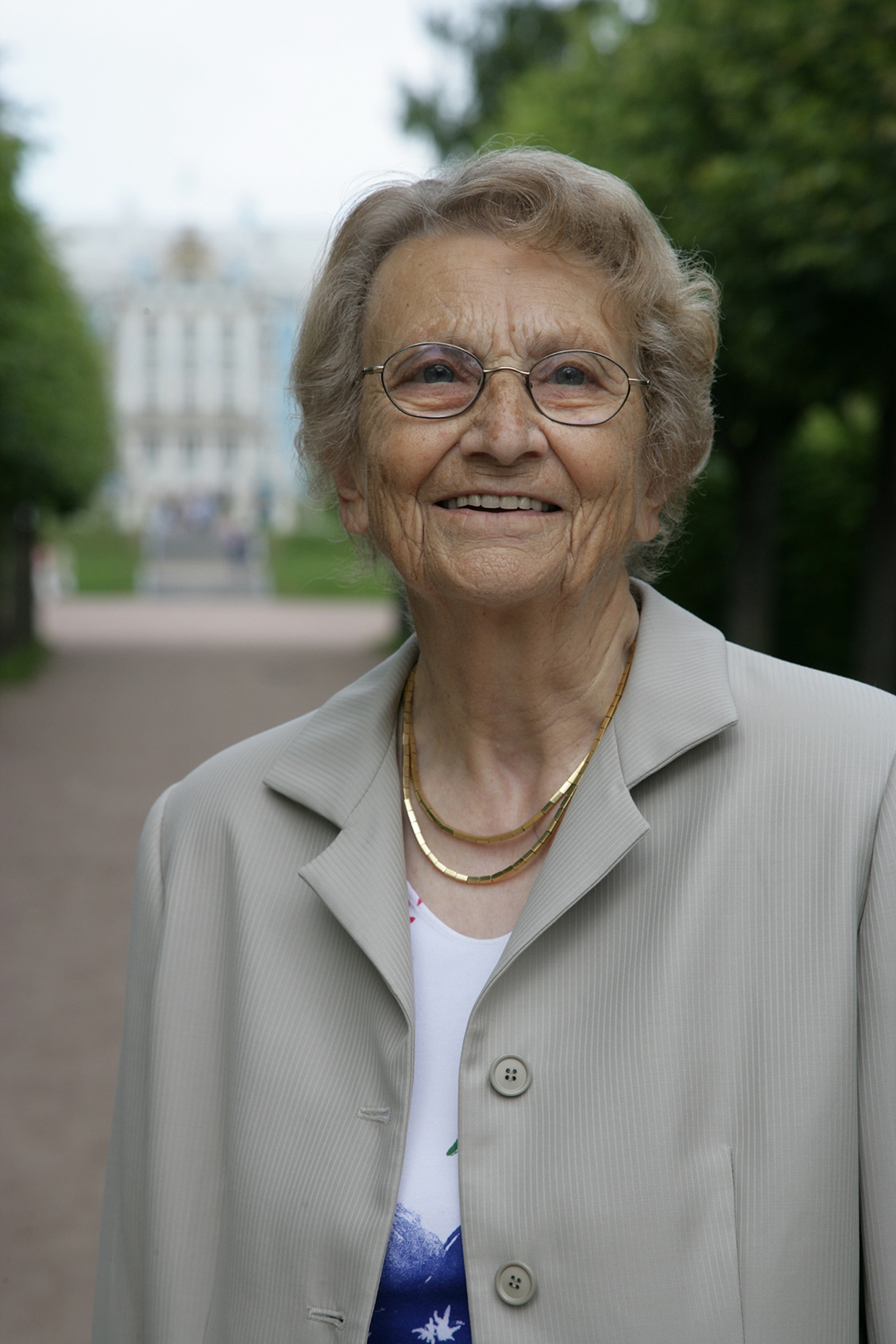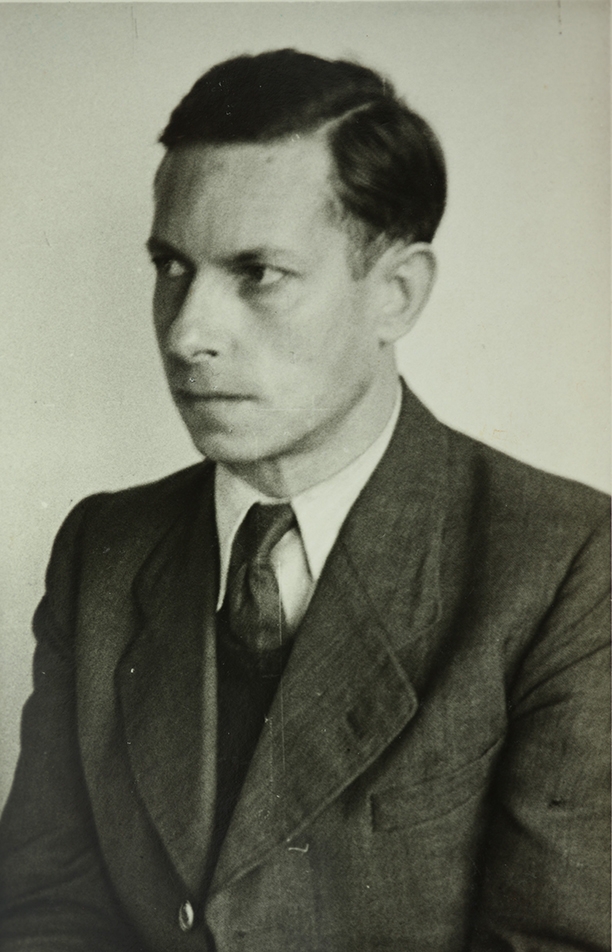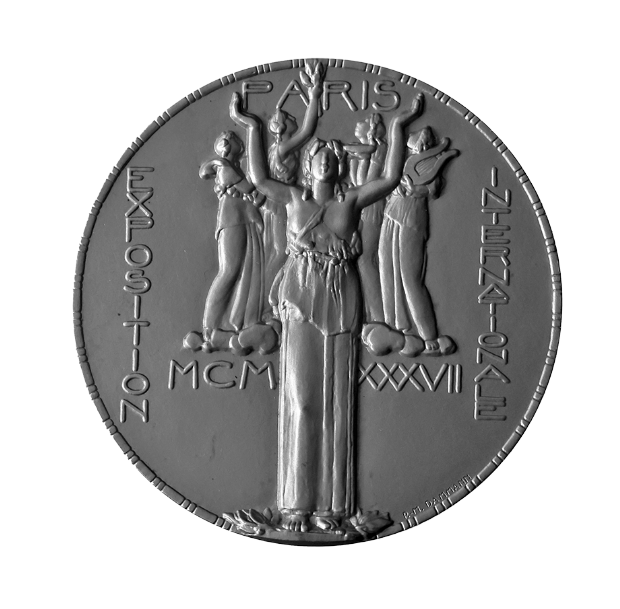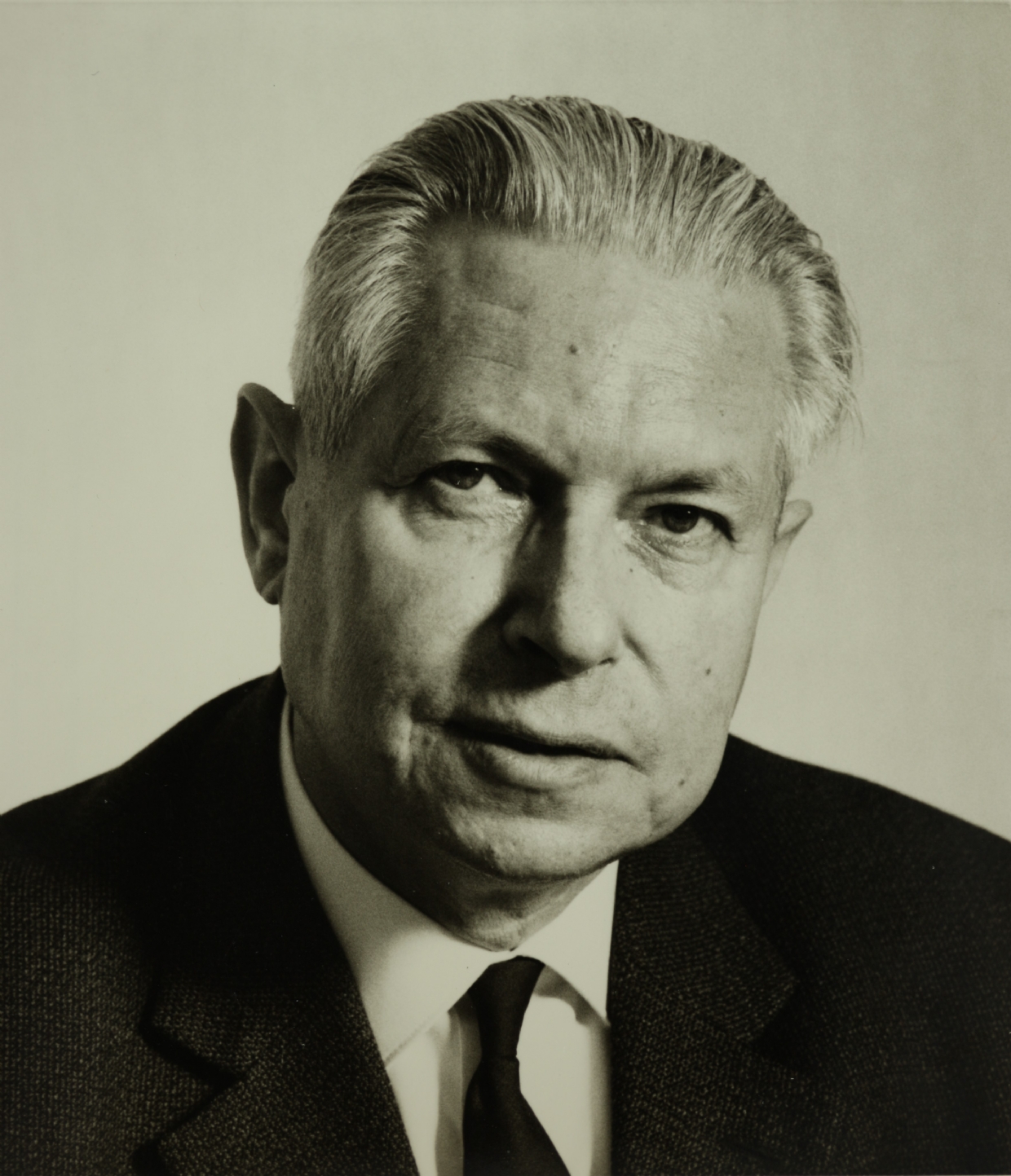Hildegard Auwärter
Founder of the Max Auwärter Prize
For the 70th birthday of Prof. Dr. Dr. h.c. Max Auwärter, Hildegard Auwärter established the Max Auwärter Foundation and donated the Max Auwärter Prize. It was a gift to her husband, with which she wanted to pay tribute to his life's work as a scientist, researcher, and entrepreneur and to pay tribute to young researchers who had done pioneering work in the field of surface physics and organic and inorganic thin films – the field in which Max Auwärter had done pioneering work himself. Max Auwärter was able to attend the award ceremonies for almost twenty years.

Dr. Max Auwärter
Researcher, inventor, designer, visionary
Materials Science
| 1933 – Development of a high-frequency mass core of small dimensions of carbonyl iron and polystyrene. 1 |
| 1938 – Development of quenchable gold-containing palladium-silver alloys (Heragold). 2 |
Surface, interfacial and thin-film technologies
|
1936 – Development of corrosion-free rhodium mirrors, for which Max Auwärter was awarded the gold medal at the 1937 World Exhibition in Paris. The application can be found as a partially transparent mirror in viewfinders and rangefinders and as a full mirror for light deflection in Rolex cameras. 1 |
|
1949 – Development of reflex-reducing double and multiple layers for optical instruments and consumer goods such as binoculars and cameras. 1 |
|
1953 – Invention and development of the reactive evaporation of thin films by means of gas dosing for hard, abrasion-resistant, absorption-free, very good oxide layers. US Patent Number 2'920'002. 1 |
| Recognition of the importance of wear-free, very hard layers such as TiN coating for tools, machine parts and consumer goods such as watch cases. |
|
1980 – Vision that thin organic layers become of particular importance for photosynthesis and efficiently contribute to the solution of long-term energy problems. 3 |

Entrepreneur
Formation of Balzers AG and OC Oerlikon
|
1946 – Formation and development of the “Gerätebauanstalt Balzers”, later BALZERS AG and OC Oerlikon. The original goal was the production of thin films for a wide variety of optical applications. Since no suitable vacuum pumps, valves, measuring devices and systems were available on the market for their production, they had to be developed and produced with a small team in a few months. The performance and quality of these "auxiliary devices for the production of thin films" led to a second pillar for the company. |

